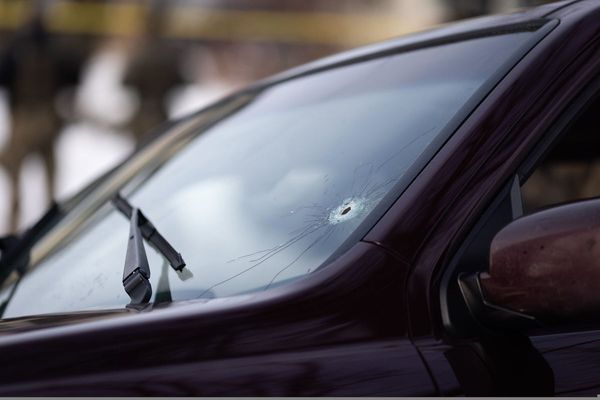
Pedro Romero’s story is a familiar one in New York: he wasn’t born or raised here, but he moved to the city to take advantage of the bustling metropolis’s many opportunities. And in a city full of people willing to hustle to make it work, he’s found an opportunity others might overlook: in the trash.
Romero is a Mexico-born, Brooklyn-based waste picker who collects, sorts and redeems empty bottles and cans. Having formerly worked at grocery stores, as a food delivery driver and in restaurants, he got into waste picking through his wife, Josefa Marín, 14 years ago, and has been at it ever since. He works seven days a week, digging through the things his fellow New Yorkers throw out and salvaging what he can.
It’s hard work, but “I wouldn’t change it for another job”, he said. “You get out of it what you put into it.”
He’s one of hundreds of thousands of informal waste workers the world over. Though they’re often overlooked and sometimes even stigmatized for operating outside formal waste-management systems, these workers represent a crucial segment of the recycling infrastructure in cities from Paris to Bangalore.
If you’ve ever noticed someone pushing a shopping cart full of aluminum cans down the sidewalk or hoisting a giant clear garbage bag full of plastic soda bottles over their shoulder, you’ve seen them.
And whether you’ve noticed them or not, they’ve probably helped recycle some of the trash you’ve generated: if you buy a plastic bottle of water from a food cart in New York on a hot summer day and then throw the empty bottle into a street corner rubbish bin, it’s more likely than not it will go to landfill. But if it manages to be part of the lucky 5% of plastic in the United States that actually gets recycled, it might be thanks to Romero or one of his colleagues.
So what does work look like for the people who help make the increasingly elusive dream of recycling come true in some of the world’s biggest cities?
One spring evening, I, a freelance writer, tagged along with Romero, a freelance recycler, on his route to find out.
Collection
I met Romero on a street corner in a well-off neighborhood in north Brooklyn around 5pm, where he’d been hanging out chatting with a small cadre of fellow canners: his brother, his wife, Josefa, and a friend of theirs. After a round of smiles and introductions, the crew split up, and I followed Romero to the first building on his route.
There was already a pile of clear plastic bags full of recyclables growing on the curb outside. Romero quickly got to work, pulling aside one bag that was already mostly aluminum cans, and then methodically but quickly working through the other bags in the pile. Wearing thin black rubber gloves and long sleeves, he rifled through each bag, dropping plastic bottles or aluminum cans into the first bag, and glass beer bottles into a second, dumping out a little liquid from the bottles onto the sidewalk here or there to keep the bags as light as possible.
He neatly retied every bag he opened, and when he’d worked through the whole pile, he carried all he’d collected a few blocks back to where we started, dropping the bags off in the back of a white van, where the faint smell of old beer wafted out from piles of bottles.
Then it was on to the next building, a new-looking apartment complex. Here, he had a key fob that allowed him to get into the trash storage area: he had an ongoing agreement with the building’s manager to haul the trash out of the building for free, in exchange for guaranteed first access to the building’s recyclables before other canners. He told me he would be able to make $8-$10 from the cans in this building.
So it continued, from one building to the next, as the light waned. Romero has built relationships with supers and building managers to try to coordinate his timing so he can get first dibs on any recyclables the building puts out; sometimes, at the bigger apartment complexes, his mini crew of canners converged on the same building to pull the recyclables from a massive mound of trash as soon as it was put out on the curb.
Every once in a while, Romero would pause – to embrace an excited puppy being walked down the street by a curious neighbor, or to say hi to someone he knew from the block – but mostly, he stayed bent over his work. The crew started around 3pm, and wouldn’t finish until around 9pm or 10pm.
Sorting
The next day, once the van was full of bags of cans and bottles, Romero drove it to Sure We Can, a non-profit recycling center a few miles away that features upcycled Coke bottle and car tire planters, recycling-themed murals painted on the side of shipping containers, and towering mountains of cans and bottles waiting to be redeemed.
Sure We Can’s mission means it operates differently from many bottle-redemption centers that have more transactional relationships with canners: the organization provides shelter from the elements rather than leaving canners to sort completely outside, serves as a meeting place for waste pickers to organize and gather, and even celebrates community members’ birthdays.
Though not officially employed together, Romero sees many of the other canners who congregate there as co-workers, and mentioned visiting a fellow canner who recently fell sick. Sure We Can also offers low-cost locker rentals, since most canners don’t have space of their own to store what they’ve collected (some canners who try to store their cans at home have run into trouble with landlords).
Once he unloaded, Romero began sorting, grouping bottles and cans into bags by brand – Modelos in one bag, Poland Springs in another. When all the bags were sorted, Romero passed them off to a Sure We Can employee, who paid him, and then took the bags and cans off his hands to be stored in one of the many towering piles at the site. After an appropriate amount of bags have piled up, a Sure We Can employee will call a bottle distributor called Manhattan Beer, which will send a truck to pick up the sorted cans and bottles.
Getting paid
Each container Romero turns in is redeemed for $0.05. Not every canner sorts their own finds, but Sure We Can offers canners who sort a portion of the handling fee that beverage retailers pay to redemption centers to cover sorting and organizational costs, which can boost canners’ returns by 20%.
This system of paying people a small fee to redeem bottles and cans, set in place by the 1982 “Bottle Bill”, is “the most effective recycling system the state has in terms of outcomes”, according to Sure We Can’s executive director, Ryan Castalia. More than 23m containers were redeemed through the organization last year, and it’s just one redemption center of about a hundred in the city, a sign that canners are having a real impact on the city’s waste flows.
But the work is often under-appreciated and sometimes even demonized by the sanitation department, and “the average income for canners in New York City is around $5 an hour, or about a third of minimum wage – certainly not close to a living wage”, Castalia told me.
That’s one reason that Sure We Can has been advocating for the “Bigger Better Bottle Bill”, which would raise the deposit amount from $0.05 to $0.10, finally bumping up a price that hasn’t increased in 40 years. The proposed bill would also expand the scope of what canners can collect and redeem to include more types of containers, including those that are used for wine, tea, coffee and liquor, all of which are currently excluded from the bottle-return program, and raise the handling fee, which is part of what allows redemption centers to stay open.
A version of the bill recently failed to pass in the New York state legislature, in part due to opposition from the bottle distributors, who would be responsible for paying the handling fees and have fought hard to keep those fees low.
Still, the canning advocates and their allies aren’t giving up – they’re taking some time to regroup but plan to continue pushing for reform to the bill next session. They also dream of a future in which the city’s sanitation department treats canners as partners and fellow stakeholders in the work of waste management, rather than acting like they don’t exist or even trying to stigmatize them as “stealing” from the piles of waste that the planet is currently drowning in.
As I watched Romero work, I began reflecting on the language we use to describe this work. When he says he’s “redeeming” bottles and cans our society throws away, I find myself thinking about the other shades of meaning that word can hold, too – a kind of atoning for the sin of waste we so egregiously engage in. One can only hope we might come to honor and fairly pay the people who undertake such crucial work.
Romero doesn’t necessarily want to do this work forever. He’s currently saving up with the hopes of starting his own business one day. But in the meantime, he’ll be here, roaming the streets and looking for the value in what others have thrown away.







